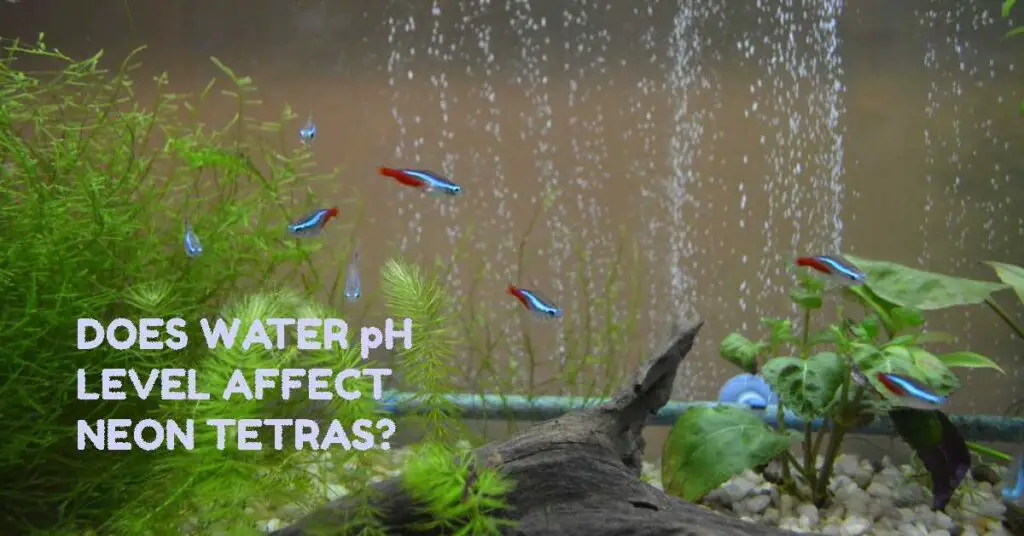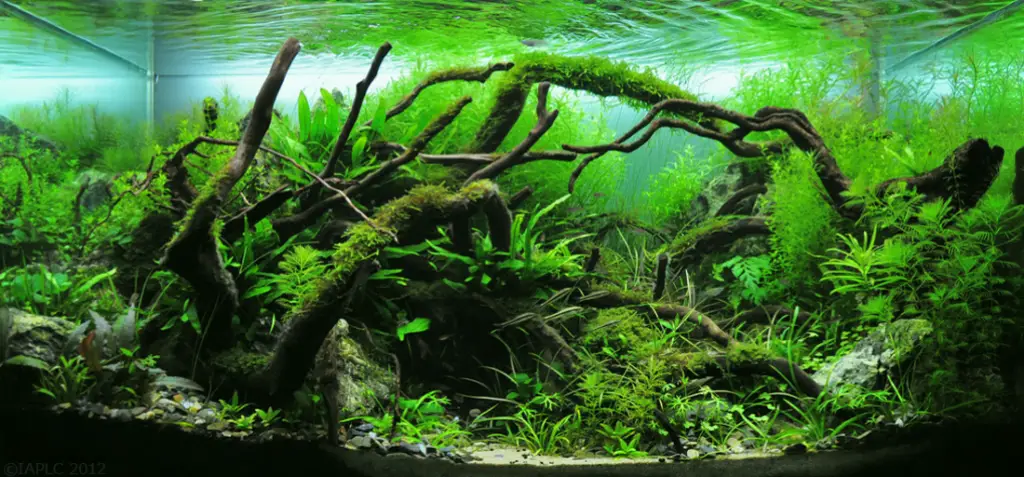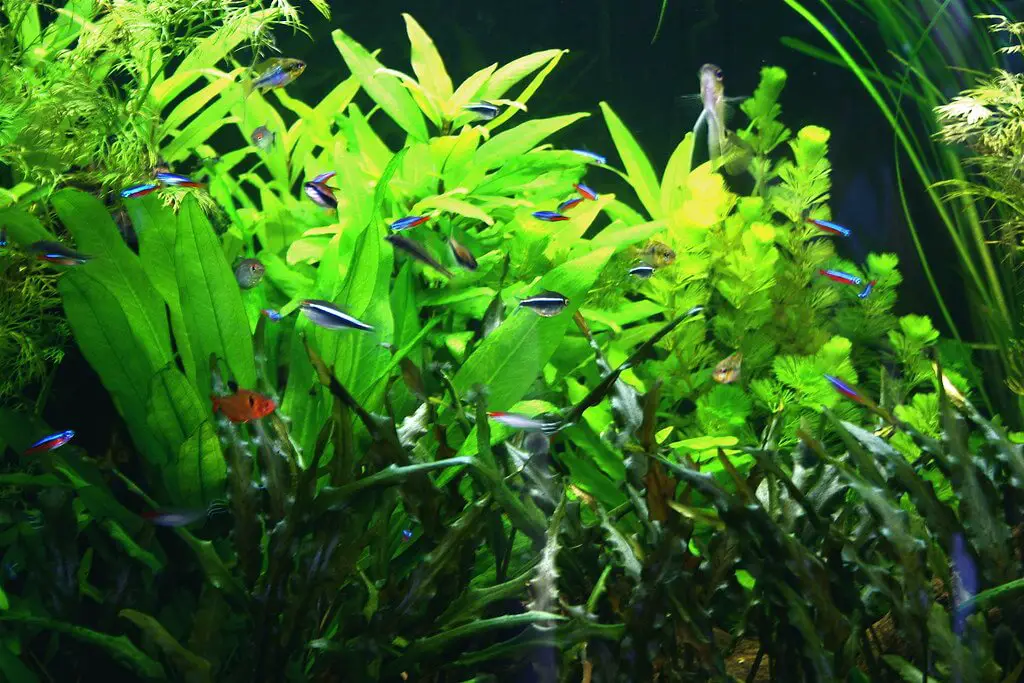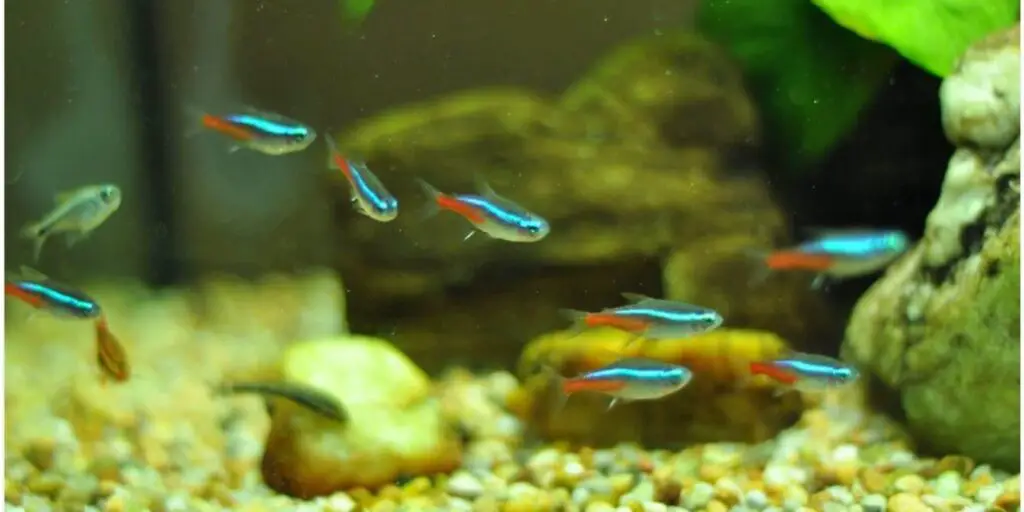Have you recently added Neon Tetras to your fish tank with pre-existing water parameters? Or are you thinking of adding other fish to your tank WITH your Neon Tetras, who are already accustomed to certain water parameters?
Either way, you must be here because you are wondering whether your Neon Tetras will be susceptible to changes in the water pH level. The truth is Neon Tetras are sensitive to changes in pH levels. However, to understand how much water pH level affects Neon Tetras, you will first need to understand what their ideal pH level is and why it affects them.
Hence, let us begin by first learning what their ideal water pH level is. Then, we can move on to understanding how the pH level can be adjusted in your fish tank to suit all of its inhabitants!
What is the Ideal Water pH Level for Neon Tetras?
The pH of water refers to how acidic or basic the water is. For instance, rainwater ranges between a pH of 5.0 and 6.0, which is acidic water. Moreover, freshwater ranges between a pH of 6.0 or 7.0, which is basic water.
For Neon Tetras, despite being freshwater fish, they thrive best in slightly acidic or neutral water.
Hence, their ideal pH level is between 5.5 and 6.2. Although, they can survive in pH levels between 5.5 and 6.8 too!
How Much Does Water pH Level Affect Neon Tetras?
Neon Tetras originate from the upper parts of the Amazon River, where the waters are soft, slightly acidic to neutral in pH, and have a moderate temperature.
It is also important to note that the pH in these streams can be as low as 4.0. However, when keeping Neon Tetras as pets, it is not necessary for you to maintain the pH level at this low level. But you do need to make sure that you are not keeping them in pH levels of higher than 7.0!
It is also important to avoid placing Neon Tetras in extremely acidic water since the good bacteria in the fish tank could die and upend the nitrogen cycle in the fish tank.
Nonetheless, you will need to make sure that the pH levels suit the Neon Tetras, as exposure to unsuitable pH levels will soon lead to issues that are more serious. So now, let us look at how resilient Neon Tetras actually are.
Related Article: Tetra Fish Diseases and Treatments
Do Neon Tetras Die Easily?
Something noteworthy here is that Neon Tetras’ lifespan is around 5-8 years, with some living up to 10 years. Nonetheless, they tend to die easily even with the slightest change in water and tank conditions.
The most common reason for their demise is stress. However, the causes for them experiencing stress is due to water and tank conditions. This means that if the tank environment is unsuitable for Neon Tetras, they will most likely experience stress and depression, and eventually perish.
For instance, there are some very telling signs that Neon Tetras are not feeling well or are about to die. Hence, I have listed some of these signs below for your reference.
- Stress; hiding out alone in nooks of the fish tank
- Restless behavior
- Swimming in a haphazard manner
Therefore, if you see any of the above-mentioned signs, it is a good idea to check your tank and water conditions and make sure that they are ideal for your Neon Tetras.
Also Read: How To Prevent Neon Tetra Disease/Crooked Spine Disease
How to Measure the Water pH Level?
Now comes the time for actually determining whether the water conditions are suitable for your Neon Tetras, in terms of pH. Hence, to figure this out you can always invest in a pH tester strip or a digital pH meter. Although, pH tester strips can expire and a digital pH meter may be too expensive.
Hence, the cheapest and most accurate method of determining the water pH level is by using an aquarium pH test kit!
In order to use this pH test kit, first, you will need to add tank water to the test tube along with a drop of the testing solution. Once you have done this, the solution in the test tube will start to change color. When this happens, you will need to match the color with the given range of colors on the pH scale. This will enable you to determine the pH level of your fish tank water!
How to Lower Water pH Level?
Once you have measured the pH level, what will be your next step if it turns out to be too high? For this, you need first to understand what causes high pH levels.
The most common way of that the alkalinity (basicity) increases is if you add tap water to a freshwater tank, if you place a fish bag from a store inside the tank, or if you add tank décors and fish food to the tank.
Hence, in order to tackle this problem, the best solution is to allow the water to aerate. What this means is you will have to leave the water in an unsealed container for several days. And when you do this, aeration will add carbon dioxide to the water, and the pH level will drop very easily. For example, it will take only a few days for the pH to drop from 7.5 to 7.0!
However, it may not be feasible to leave gallons of water around for days, especially if you have a huge fish tank. Hence, adding live plants to your tetra fish tank is solution two. An increase in the number of live plants in your fish tank can really help reduce the pH level of the water.
You can always opt to inject CO2 into your fish tank if you have a planted tank. Or you can also opt to add driftwood to your tank in order to lower the pH level.
Another easy method of reducing the pH level is to add Peat Moss to your tank. And how Peat Moss works is by tackling the bicarbonates in the water. However, for this to work you will need to place chunks or pellets of Peat Moss and place it in your tank!
Finally, the last solution to bring down the pH level of the water is to use chemicals that you can find easily in aquarium shops.
How to Increase Water pH Level?
The first thing to note here is that carbon dioxide is the most common cause of acidity in water. Hence, if the pH level in your fish tank water is low, it is likely that your water has been exposed to the air too much. It may also be because of the presence of tank décor like driftwood, or a failure of the filtration system, or even the presence of certain medications in the water!
Also Read:
- Can Tetra Fish Live Without Heater And Filter?
- Types of Aquarium Filter For Tetra Fish and Filtration Methods
- Do Neon Tetras Need Filter To Survive?
Nonetheless, if you are looking for easy and simple ways to increase the water pH level then I have listed ways of doing so below! However, do remember to remove the Neon Tetras from your tank before you raise the pH level of the water.
A simple method to increase pH levels is to add 1 teaspoon of baking soda to 5 gallons of water. Wait for the baking soda to dissolve and wait 30 minutes to an hour before you place your tank inhabitants back into the water! You can repeat this process gradually to increase the pH level. But make sure not to add too much too frequently as this will not bode well with the Neon Tetras!
Another simple method of increasing pH level is to add coral, limestone, or Texas holey rock to your tank.
Moreover, Aquarium Salt is also a great option for raising the water pH level. However, aquarium salt will also increase the salinity of the water. Since, Neon Tetras can tolerate small increases in salinity, adding only little amounts of aquarium salt could work. However, the other solutions mentioned above are better for increasing water pH levels in a tank that has Neon Tetras!
What Influences the pH Level in Fish Tanks?
Now, as discussed in two of the consecutive sections above, many factors influence the pH in fish tanks. Hence, in order for you to be well aware of these factors, I have first listed out the factors that cause pH levels to decrease.
- Water aeration will decrease the pH level
- Injecting CO2 and adding live plants will lower the pH level
- Adding driftwood will lower the pH
- Increased levels of nitrates will lower the pH
- Increased levels of waste in the tank will lower the pH
- RO water has a pH of 6 or lower
The following are the factors that cause pH levels to increase.
- Hard water will allow the pH level to increase
- The presence of crushed corals, limestone, or Texas holey rock will increase the pH level
- Adding aquarium salt will increase the pH level
Final Words
Hence, my parting words would be to make changes to the water pH levels in a gradual manner because Neon Tetras will always notice inconsistencies eventually. These changes in the water conditions could lead to them feeling stressed out and this may lead to problems that are more serious.
Furthermore, you can go through the measures mentioned above to increase or decrease pH levels whenever necessary. However, remember to remove the Neon Tetras from the tank before you lower or increase the water pH level in your fish tank!
Finally, measuring the pH level of the water in your fish tank once a week is immensely important. This way you will stay informed about the water conditions. Hence, this will enable you to take action before any of the fish show signs of sickness or worse!
Image Source:
Flickr
https://www.flickr.com/photos/114908236@N06/19265574999/in/photostream/





